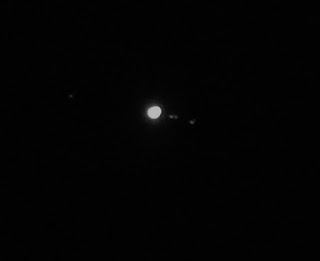No new year's resolutions for me! I have lived long enough to know that most resolutions made in late December fail. A common one is losing weight by starting a diet on January 1st or 2nd. No way! If you want to diet to lose weight, spring or summer is far more likely to be successful, as the weather is warmer and there is less temptation to comfort eat. The other thing is that circumstances change. People meet partners, split from partners, have children, get ill, lose relatives, so many things (good and bad) happen that render resolutions unachievable or even irrelevant.
As an example, I returned to full-time work, after working part-time in 2021, so had less time to observe, take photographs or spend time processing them.
Instead, I have made a mission statement on how I will approach 2023 from an astronomical point of view.
1. I often whinge. Fortunately, it is mostly to myself and not to others, or online. When I read forums, it appears to me that my equipment pales in quality and volume to most other astronomers. I see the photos they produce and know that it is just impossible to obtain them with my equipment. What I need to remind myself is that many astronomers (probably more than I realise) would consider themselves lucky to have my set of kit.
2. Related to the above, I am quite good, maybe even better than that, at pushing the kit I have to its limits. We don't like to trumpet-blow but sometimes there are things we can rightly be proud of. I must accept that it is simply not possible to take long-exposure deep sky photographs with my kit, nor is it possible for me to get photographs of Mars with my 5" telescope that I could get with a 14" telescope.
3. Related to the above (again!), there are photographs I take that work with what kit I have. The best examples are my meteor photos and full-disc solar photos.
4. I will experiment more with using different equipment combinations and processing tools/techniques. I had already started this in November.
5. I am taking a break from writing and will stop writing my annual summaries. They have not sold well and the only reason I'm releasing my 2022 summary is that I had already spent a lot of time on it. Before writing again, I am having a big rethink about what I will write next and need to be realistic about how much time I can spend on it. I have extended family issues that need my time and energy that need to be resolved.
6. Much as astronomy writers use their online content as a marketing tool, I will reduce the amount of easy shots of familiar objects I take. I will concentrate on meteors and white light solar. If I take photos of the Pleaides and Orion Great Nebula, I will try to do something different with each shot.
7. I am obsessed with getting a result on every session and will end with an easy shot just to fill my blog and gallery. It is frustrating to do a photo session without something worth sharing online but it is not the end of the world.
8. I will look for new constellations and deep sky objects to photograph.
9. Lastly, I must remind myself that being an astronomer is a privilege that only few people are able to enjoy.



































